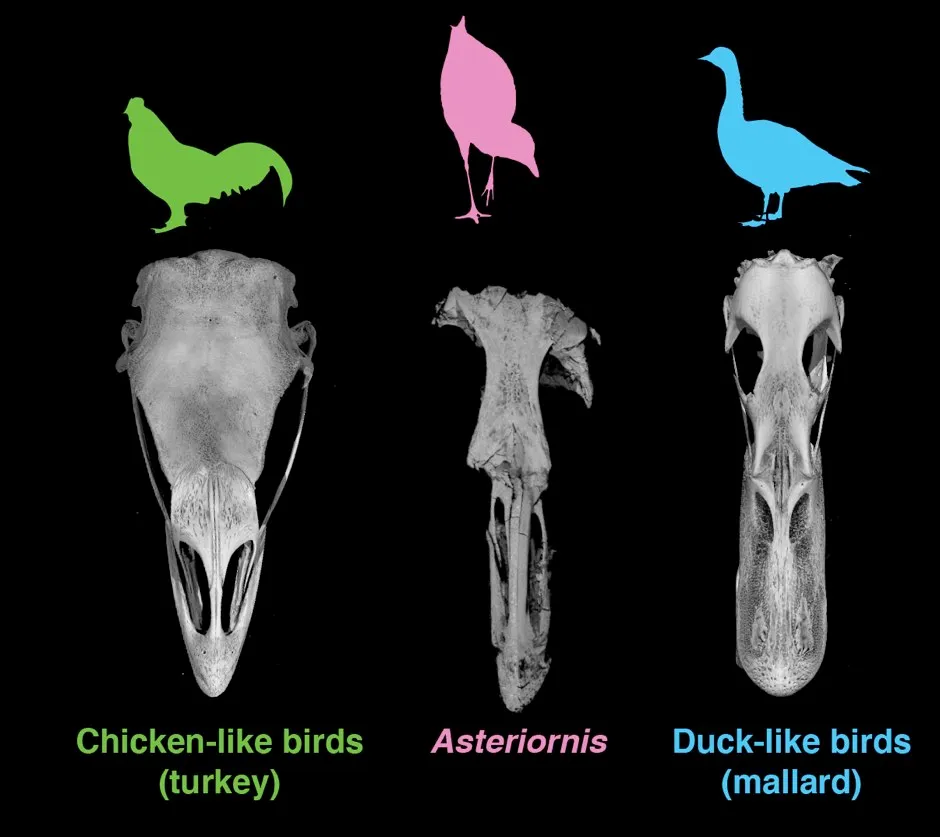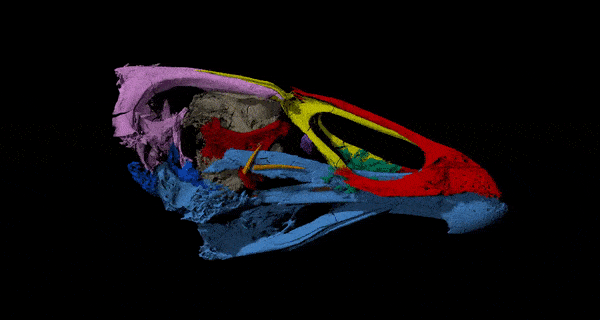- 66.7-million-year-old 'Wonderchicken' fossil found in limestone quarry.
- Researchers think it may be close to the last common ancestor of modern chickens and ducks.
- High-resolution X-ray CT scans used to scan the fossil without removing it from rock.
Scientists have identified the oldest fossil ever found of a modern bird.
The fossil, found in a limestone quarry near the Belgian-Dutch border, dates from less than one million years before the asteroid impact which eliminated all large dinosaurs.
A research team, led by Cambridge University, identified a near-complete 66.7-million-year-old bird skull within the rock.

The skull combines many features common to modern chickens and duck-like birds, suggesting it may be close to the last common ancestor of modern chickens and ducks.
It has been colloquially nicknamed the Wonderchicken and formally named Asteriornis, in reference to Asteria, the Greek Titan goddess of falling stars.
Researchers used high-resolution X-ray CT scans to peer through the rock and view the skull just one millimetre beneath.

“The moment I first saw what was beneath the rock was the most exciting moment of my scientific career,” said Dr Daniel Field from Cambridge’s Department of Earth Sciences, who led the research.
“This is one of the best-preserved fossil bird skulls of any age, from anywhere in the world.
“We almost had to pinch ourselves when we saw it, knowing that it was from such an important time in Earth’s history.
Read more about ancient fossils:
- Billion-year-old seaweed fossil suggests algae is 200 million years older than we previously thought
- Fossilised skull reveals face of early human ancestor
- Make it snappy! Crocodile fossil identified after 250-year wait
“The ability to CT scan fossils, like we can at the Cambridge Biotomography Centre, has completely transformed how we study palaeontology in the 21st century.
“This fossil tells us that early on, at least some modern birds were fairly small-bodied, ground-dwelling birds that lived near the seashore.
“Asteriornis now gives us a search image for future fossil discoveries — hopefully it ushers in a new era of fossil finds that help clarify how, when and where modern birds first evolved.”
Co-author Albert Chen, a PhD student based at Cambridge, said: “The origins of living bird diversity are shrouded in mystery — other than knowing that modern birds arose at some point towards the end of the age of dinosaurs, we have very little fossil evidence of them until after the asteroid hit.
“This fossil provides our earliest direct glimpse of what modern birds were like during the initial stages of their evolutionary history.”

The announcement of the Wonderchicken find coincides with a new exhibit at Cambridge’s Sedgwick Museum of Earth Sciences, where visitors can learn more about Asteriornis and see the fossil up close.
Research is published in the journal Nature.
Reader Q&A: Which came first, the chicken or the egg?
Asked by: Alan Healy, France
Eggs are much older than chickens. Dinosaurs laid eggs, the fish that first crawled out of the sea laid eggs, and the weird articulated monsters that swam in the warm shallow seas of the Cambrian Period 500 million years ago also laid eggs. They weren’t chicken’s eggs, but they were still eggs.
So the egg definitely came first. Unless you restate the question as ‘which came first, the chicken or the chicken’s egg?’ Then it very much depends on how you define a chicken’s egg. Is it an egg laid by a chicken? Or is it an egg that a chicken hatches from? Chickens are the same species as the red jungle fowl of Southeast Asia, although they were probably hybridised with the grey jungle fowl when they were domesticated 10,000 years ago.
But it doesn’t matter; at some point in evolutionary history when there were no chickens, two birds that were almost-but-not-quite chickens mated and laid an egg that hatched into the first chicken. If you are prepared to call that egg a chicken’s egg, then the egg came first. Otherwise, the chicken came first and the first chicken’s egg had to wait until the first chicken laid it.
Read more:
